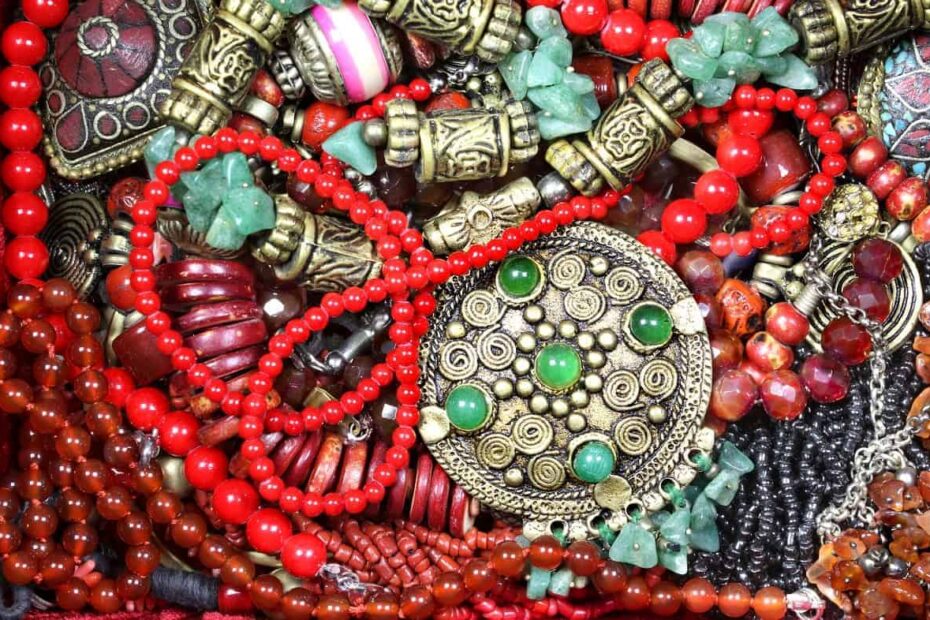Unveiling the Hidden Narratives Behind Costume Jewelry
When I first discovered my grandmother‘s vintage costume jewelry box, I never imagined it would transform into a lifelong passion that would connect me with extraordinary stories spanning decades of design, craftsmanship, and cultural expression. Each piece whispered secrets of its era, revealing more than mere decorative accessories – they were historical artifacts waiting to be understood.
A Personal Exploration of Collectible Treasures
Costume jewelry represents far more than affordable alternatives to fine jewelry. These intricate pieces capture moments in time, reflecting societal changes, artistic movements, and individual expressions of creativity. My journey as a collector has taught me that true value extends beyond monetary worth – it resides in the rich narratives embedded within each carefully crafted piece.
The Fascinating Evolution of Costume Jewelry
The story of costume jewelry is deeply intertwined with social transformation. Emerging in the early 20th century, these pieces democratized personal adornment, allowing individuals from diverse economic backgrounds to express style and sophistication. What began as imitations of fine jewelry quickly evolved into independent art forms, challenging traditional notions of value and beauty.
Historical Contexts and Cultural Significance
During the 1920s and 1930s, costume jewelry became a powerful medium of self-expression. The Art Deco movement revolutionized design, introducing geometric patterns and bold architectural influences. Designers like Coco Chanel and Elsa Schiaparelli transformed costume jewelry from mere accessories into statement pieces that challenged conventional fashion norms.
Legendary Brands: Masters of Costume Jewelry Design
Miriam Haskell: Architectural Elegance in Miniature
Miriam Haskell‘s workshop represented more than a manufacturing space – it was a sanctuary of creativity. Each piece emerged from meticulous handcrafting, with artisans spending hours arranging delicate beads and crystals. Her signature style combined intricate wirework with carefully selected materials, creating miniature architectural marvels that transcended traditional jewelry design.
Chanel: Redefining Luxury and Accessibility
Coco Chanel‘s approach to costume jewelry was revolutionary. She understood that true luxury wasn‘t about expensive materials but about design, proportion, and individual expression. Her pieces deliberately blurred lines between fine and costume jewelry, introducing a democratic approach to personal adornment that resonated globally.
The Science of Authentication: Identifying Genuine Treasures
Authenticating costume jewelry requires a combination of historical knowledge, technical expertise, and intuitive understanding. Professional collectors develop a nuanced approach that goes beyond surface-level examination.
Sophisticated Identification Techniques
Experienced collectors employ multiple strategies when evaluating potential acquisitions. Metallurgical analysis, examination of manufacturing techniques, and comprehensive historical research form the foundation of reliable authentication. Understanding subtle design variations, manufacturing marks, and material compositions becomes an art form in itself.
Investment Strategies for Discerning Collectors
Successful costume jewelry collecting transcends simple acquisition. It demands strategic thinking, comprehensive market understanding, and a deep appreciation for historical context.
Market Dynamics and Valuation Considerations
Contemporary costume jewelry markets are complex ecosystems influenced by multiple factors. Rarity, condition, designer reputation, and historical significance collectively determine a piece‘s potential value. Emerging digital platforms and global collector networks have transformed traditional valuation methodologies, creating more transparent and accessible markets.
Preservation: Protecting Historical Narratives
Preserving costume jewelry requires specialized knowledge and genuine passion. Each piece represents a fragile connection to historical moments, demanding careful conservation techniques that respect its original craftsmanship.
Conservation Best Practices
Professional conservators recommend creating controlled environments that minimize environmental degradation. Specialized storage solutions, careful handling protocols, and periodic professional assessments ensure these delicate artifacts maintain their integrity for future generations.
The Future of Costume Jewelry Collecting
As technological innovations and sustainable design practices emerge, costume jewelry continues evolving. Contemporary designers are reimagining traditional techniques, incorporating ethical manufacturing processes and exploring innovative materials.
Emerging Trends and Collector Opportunities
The next generation of costume jewelry collectors will likely focus on pieces that represent technological innovation, sustainable production, and meaningful cultural narratives. Digital authentication technologies, blockchain provenance tracking, and global collaborative platforms are reshaping traditional collecting methodologies.
Personal Reflections: A Collector‘s Wisdom
After decades of exploration, I‘ve learned that costume jewelry collecting is more than an investment strategy – it‘s a profound connection with human creativity, cultural expression, and historical narrative.
A Message to Aspiring Collectors
Approach your collection with curiosity, respect, and genuine passion. Each piece carries a unique story waiting to be discovered and appreciated. Your role as a collector is not just to acquire but to understand, preserve, and share these extraordinary narratives.
Collector‘s Manifesto
- Embrace continuous learning
- Develop discerning expertise
- Respect historical context
- Preserve cultural heritage
- Share passionate discoveries
Costume jewelry represents an extraordinary intersection of art, history, and personal expression. Your collection is a living, breathing testament to human creativity and cultural evolution.
